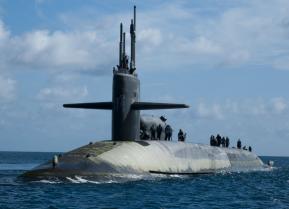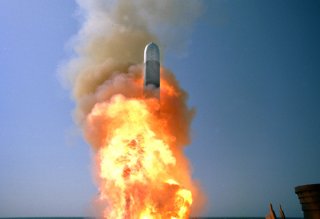The U.S. Military's Tomahawk Cruise Missile Is Raw Firepower Like No Other
There is a reason Japan and surely other nations would love to get as many Tomahawk cruise missiles as they can, as they have proven themselves in countless armed conflicts for the U.S. military.
Tomahawk Cruise missile, explained: Japan penned a deal to procure up to 400 Tomahawk cruise missiles last month as regional tensions in the South China Sea continue to escalate.
On the same day, Japan’s Ministry of Defense also announced it had signed a contract to purchase additional Joint Strike Missiles.
As part of this arrangement, Tokyo will receive 200 Block IV, 200 Block V Tomahawks Control Systems, in addition to 14 Tactical Tomahawk Weapon Control Systems, along with training, maintenance support and other items.
Japan’s efforts to improve stand-off missile capabilities as well as building up its military defenses will contribute to its ability to carry out attacks against hostile territories in time of war.
There is clearly a reason Japan and surely other nations would love to get as many Tomahawk cruise missiles as they can, as they have proven themselves in countless armed conflicts for the U.S. military.
Introducing the Tomahawk
The American-made long-range, jet-powered, subsonic cruise missile was first developed back in the 1970’s. Around this time, manufacturer General Dynamics was tasked with fulfilling the U.S. military’s requirement for a low-altitude missile capable of being operated from a naval surface warfare program.
Over the years, more than one dozen variants have entered service, all equipped with greater enhancements. Initially, General Dynamics represented the sole supplier of the Tomahawk, however, McDonnell Douglass took over from 1992-1994, serving as the sole supplier of Block II and Block III Tomahawk variants.
In the mid-1990’s, Hughes Aircraft purchased General Dynamics’ missile division and lobbied to once again take over the missile’s supply. As of 1995, Raytheon Technologies has remained the sole manufacturer of the Tomahawk.
Specs & Capabilities:
With a 900-nautical mile range and ability to loiter over targets like unmanned aerial vehicles (UAVs), Tomahawks have become the military’s go-to first strike weapon in the opening moments of conflict.
Since entering service years ago primarily to combat the USSR’s air defenses, the Tomahawks have proven to be reliable tools against striking fixed targets, including enemy command and control centers, and other infrastructure.

The original Block I Tomahawk variants included the Tomahawk Land Attack Missile-Nuclear and the Tomahawk Anti-Ship Missile. As detailed by the Center for International and Strategic Studies:
“Block II variants include the TLAM-C (RGM/UGM-109C), designed to attack hardened targets, and the TLAM-D (RGM/UGM-109D) designed to attack ‘soft’ targets such as aircraft and troop concentrations. Block III updates included new electronics allowing for coordinated attacks. Block IV missiles, the most modern version, are capable of loitering in flight for hours and possess a two-way data link designed for receiving updated mission information of course corrections.”
Operational History:
The Tomahawk was first deployed to combat during the 1991 Gulf War. These missiles were fired from the USS Paul F. Foster as part of Operation Desert Storm, successfully firing towards Iraqi targets. The missile’s TERCOM system, however, performed worse during Operation Iraqi Freedom in 2003, as they struggled to guide the missiles directly toward targets during this mission. As newer variants were introduced, these shortcomings were largely rectified. Most recently, the Tomahawks have been fired by U.S. warships targeting Houthi assets in the Red Sea.
About the Author: Maya Carlin
Maya Carlin, National Security Writer with The National Interest, is an analyst with the Center for Security Policy and a former Anna Sobol Levy Fellow at IDC Herzliya in Israel. She has by-lines in many publications, including The National Interest, Jerusalem Post, and Times of Israel. You can follow her on Twitter: @MayaCarlin.


